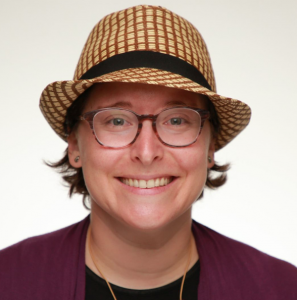Din & Daf: Conceptual Analysis of Halakha Through Case Study with Dr. Elana Stein Hain
What is the concept behind חזקת ג’ שנים?
Bava Batra 28
The third perek of Bava Batra introduces the concept of חזקת ג’ שנים, that one who has been living on a property for three years without protest from the original property owner is considered the new owner despite having no official deed of sale. Why and how does this work? What does it teach us about human relationships to landed property and about this financial arena as a whole?
Dr. Elana Stein Hain – dinanddaf@hadran.org.il
Listen here:
Watch here:
Sources:
For the good of consumers
- הרא”ה בשיטה מקובצת בבא קמא לט. R. Aharon haLevi, 13th century
The shittah mekubetzet is a 16th c. anthology of Talmudic commentary by R. Bezalel Ashkenazi.
וחזקה אינה ראיה גמורה היא; מילתא דאפשר הוא דאכליה תלת שנין אף על גב דלאו דידיה; אלא דרבנן תקון משום דלא מזדהר איניש בשטריה.
Living on land for 3 years is not a complete proof. It is possible that someone spent 3 years living there even though it does not belong to them. Rather, the rabbis decreed this because people are not careful about keeping their contract (after 3 years).
There’s proof here
- תוס’ הרא”ש בבא מציעא קי. ד”ה ואמר R. Asher ben Yechiel, 14th century
דאנן סהדי שאין אדם מניח קרקע ביד חברו שלש שנים בלא מחאה אם לא שמכרה; כי ידוע לכל שתקנו חכמים דחזקת שלש שנים עומדת במקום שטר, כי אין אדם יכול לשמור שטרו לעולם, וגם תקנו כנגדה שהמחאה מבטלת החזקה היכא שמחזיק בה בגזל.
We are all witnesses that a person does not leave their land in the hand of their fellow for 3 years without protesting unless they have sold it. For it is known to all that the rabbis decreeds that landholding for 3 years stands in place of a contract, for a person cannot keep their contract forever. And they also decreed correspondingly that protest by the original owner nullifies the holding where the person is holding the land in theft.
There’s an actual kinyan here
- ר’ האי גאון ספר מקח וממכר שער י”ג ד”ה וחזקה זו R. Hai ben Sherira, 10th-11th century
וחזקה זו מתחלקת לשני פנים יש חזקה שאין אדם קונה את הקרקע אלא בשלש שנים וזוהי חזקה שיש עימה טענה כגון שמוכר אומר לא מכרתי ולוקח אומר לקחתי צריך שיביא לוקח ראיה שאכלה שלש שנים וטענת המוכר אינה טענה אבל חזקה שהיא ברצון שניהם שזה מוכר וזה לוקח ואין טענה ביניהם שאם נעל וגדר ופרץ בפניו כל שהוא ולאחמ”כ רוצה אחד מהם לחזור לאו כל כמיניה.
And the concept of chazakah has two types: there is a chazakah that a person needs three years to acquire land, and this is a chazakah that has a claim alongside it – e.g., the seller says, “I didn’t sell,” while the buyer says, “I bought”: the buyer must bring proof that they used the land for three years, and the seller’s claim is no longer a claim. But a chazakah that is done with the will of both, when one sells and the other buys, and there is no litigation between them, is if the (buyer) locked or fenced or broke a fence in front of the seller in any way. If afterwards one of them wishes to renege, that party does not have that right on their own.
- תוספות בבא מציעא קי. ד”ה א”ל
לעולם יהיה בעל הקרקע נאמן לומר שבגזל הוא בא מגו דאי בעי אמר במשכנתא היה אצלך או לפירות הורדתיך? וי”ל דהוי מגו במקום עדים, דאנן סהדי אם היה בא בגזל לא היה שתיק אלא היה מוחה…אי נמי חשיב מגו להוציא כיון שאכלה שני חזקה.
The original owner of the land should always be believed in claiming that the new landholder is squatting in theft because the original owner could have made a different claim that would have worked – e.g., the land was pledged property for a loan or I only gave you permission to be there to use/own what grew (rather than owning the land). (So why isn’t the original owner believed?!) One might answer that this is a migo where there are witnesses, for we are all witnessed that if one was squatting in theft, the original owner would not have been quiet, but would have protested…Alternatively, it is considered a migo to extract property because the new landholder has already used the land for 3 years of chazakah.
![]()
Hadran’s Beyond the Daf shiurim are also available by podcast on
Beyond the Daf is where you will discover enlightening shiurim led by remarkable women, delving deep into the intricacies of Talmudic teachings, and exploring relevant and thought-provoking topics that arise from the Daf.





